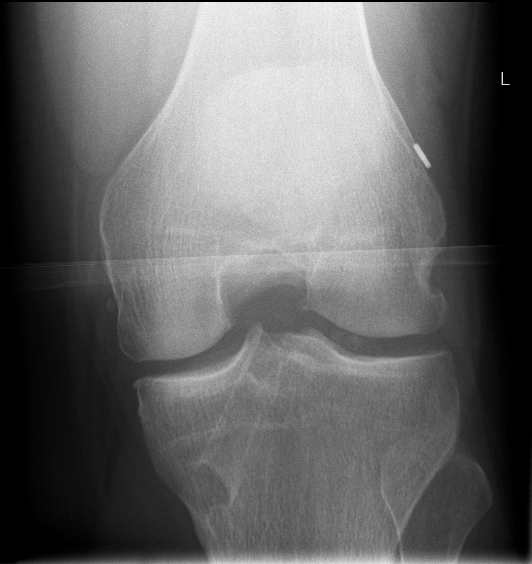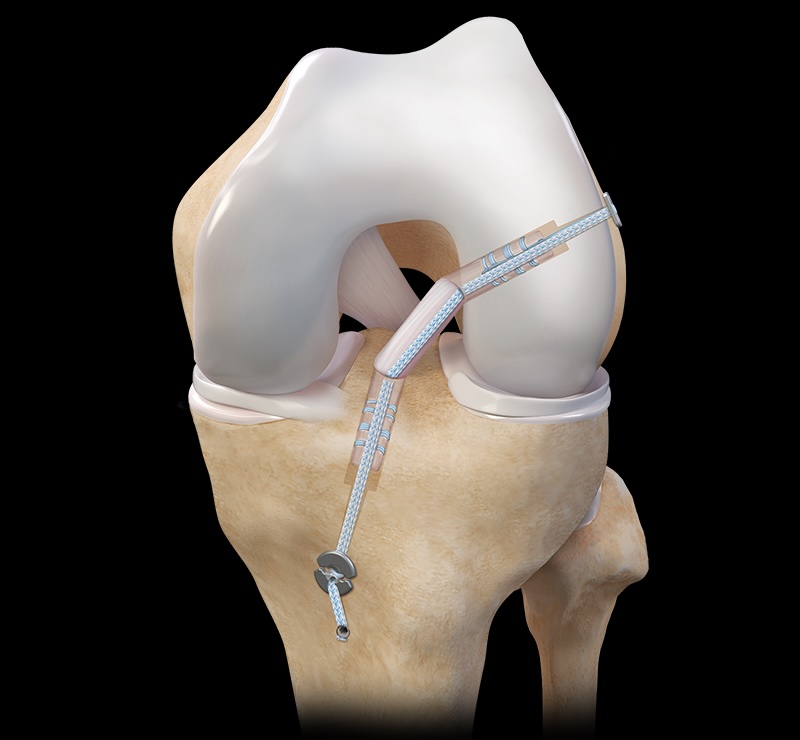Candidates for ACL reconstruction may include:
- Athletes engaged in high-risk sports that involve sudden changes in direction, jumping, or physical contact.
- Individuals with unstable knees, as determined by clinical examination and complaints of a feeling of instability.
- Younger patients (<25 years) and those with ligamentous laxity or hypermobile joints.
For patients over 40-50 years of age and not athletically active or with minimal complaints of instability, non-surgical treatment, including physiotherapy and lifestyle modifications, may be all that is needed. Read more about ACL rupture and other knee ligament injuries below:
What the surgery involves
ACL reconstruction replaces the torn ligament with a graft to restore knee stability. The most commonly used grafts come from hamstring tendons at the back of the thigh. Other graft source options include the patellar tendon (below knee cap), quadriceps tendon (above knee cap) and donated tendon from organ donors (allograft). The procedure involves:
- Graft Harvesting: Two hamstring tendons are taken through a small incision below the knee (about 4 cm) and prepared into a new ligament structure.
- Arthroscopy: Small portals are created in the knee for a minimally invasive arthroscopy (key hole surgery) to evaluate and treat other injuries if needed.
- Tunnel Creation: Tunnels are drilled in the femur (thigh bone) and tibia (shin bone) to position the graft correctly.
- Graft Fixation: The graft is secured into the tunnels using screws or buttons to replicate the original ACL.
- Closure: Incisions are closed with sutures, and dressings are applied.
Advanced surgical techniques ensure precise graft placement, critical for optimal recovery and long-term knee stability.

What to expect after surgery
You will be able to walk immediately with crutches, though leg muscles may take up to 48 hours to regain their full function. Pain relief medications and anti-inflammatory drugs will be provided to manage discomfort.
Waterproof dressings cover the surgical sites, allowing you to shower. These can be removed at home after two weeks. You should expect some swelling around the knee and incisions. Applying the R.I.C.E. principles—rest, ice, compression, and elevation—can help reduce this.
Read Dr Lambers’ full post-operative rehabilitation protocol below.
How long will I stay in the hospital?
Patients go home the same day as their operation with tablet pain relief and using crutches. A physiotherapist will assist you before discharge to ensure you’re confident with post-surgery mobility.
Recovery timeline
- Rest is crucial in the first few days, with gradual increases in activity based on your pain and swelling levels.
- 2–4 Weeks post-surgery, the swelling decreases.
- Guided rehabilitation begins immediately to restore range of motion, strength, and stability.
- High-risk sports are usually resumed at 12 months after clearance from your surgeon and physiotherapist.
Potential risks
- Surgery can cause blood clots to form in the lungs or leg
- Infection at the surgical site or within the knee joint is a rare but serious risk
- Reduced range of motion or persistent weakness may occur post-surgery
- Some patients may experience ongoing pain despite the procedure
- In cases involving donated grafts (allograft), immune rejection can impair healing
- Surgical risks in young patients may affect bone development if growth plates are damaged
- The new graft can also rupture, if injured
The decision to undergo ACL reconstruction
Take the time to assess whether surgery aligns with your lifestyle, goals, and expectations. Dr Lambers can help you weigh the benefits, risks, and alternatives to make the best choice for your knee health.

